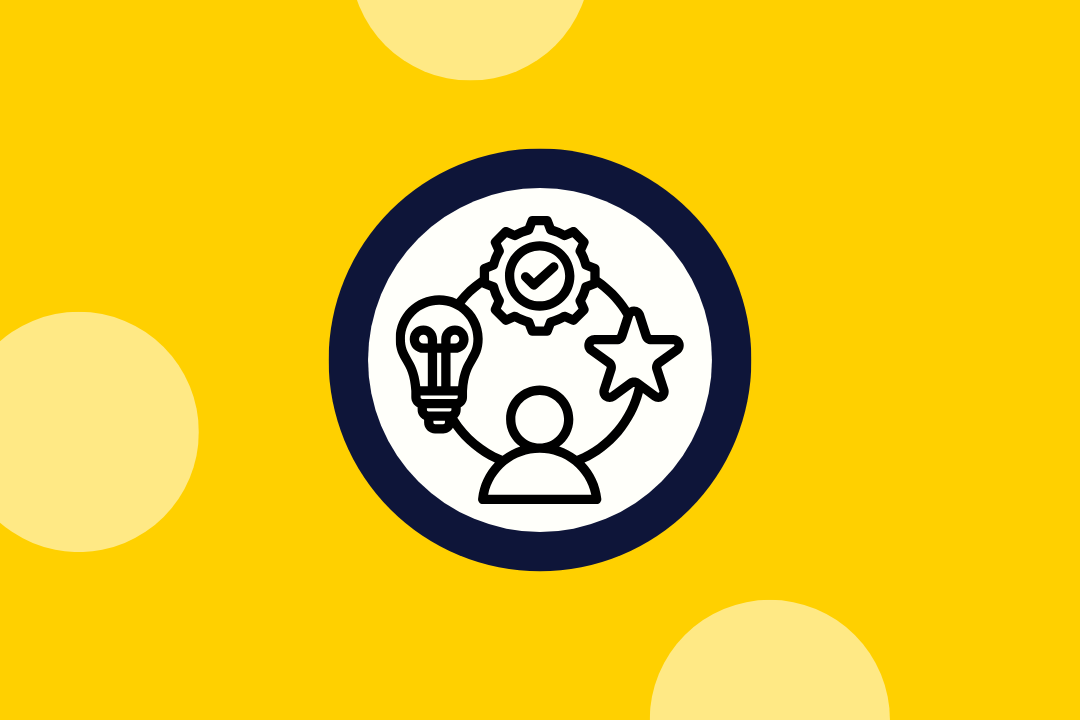How to Increase Conversion Rates in B2B Marketing
Published
March 23, 2023
Updated
March 23, 2023

B2B companies face a unique set of challenges when it comes to attracting and converting potential customers. Unlike B2C companies, B2Bs typically deal with longer sale cycles, more complex decision-making processes, and a smaller pool of potential customers. We've all read countless marketing articles predominantly focused on “quick fixes” for conversion in the B2C space. The reality is, those hacks simply aren’t applicable for B2B companies looking to increase conversion rates.
By understanding and addressing the challenges unique to B2B, marketing leaders can unlock new ways to increase conversion rate—and make it stick.
Table of Contents
- Tactic 1: Define your target market
- Tactic 2: Utilize the product-led growth (PLG) model
- Tactic 3: Implement a viral loop
- Tactic 4: Optimize your website’s CTAs
- Tactic 5: Leverage the freemium model
- Tactic 6: Invest in content marketing

Tactic 1: Define Your Target Market
Before you can launch into any of the strategies listed below to increase conversion rates for your B2B company, it’s crucial that you define your target market. By understanding who your ideal customer is, you can tailor your marketing messages and sales approach to better meet their needs and increase the likelihood of converting them into customers—and who doesn’t want that?
Here are some tangible steps on how to do so:
- Research your audience: Look to customer data, user calls, and social media channels for insights into your target market. Where are your customers spending the most time in your product? What words are they using to describe their pain points? What social posts get the most shares and traction?
- Create buyer personas: We're not necessarily recommending you get as specific as having a name and emotion attached to your buyer (see: SEMrush’s Elon Musk persona). But it is important to have a strong sense of your general “buyer buckets.” Each bucket should include information such as job title, company size, industry, pain points, and goals.
For example: The Mailchimp email tool targets entrepreneurs and mom-and-pop shops with their freemium model, but enterprise marketing teams with their higher-tiered plans. Both buckets have similar goals and pain points; create fully customized emails to keep customers in the loop—no coding knowledge necessary.
- Tailor your marketing messaging: After you’ve researched your audience and created your buyer personas, use this information to improve your marketing messaging. Dig into the language you heard in user calls from the research portion and apply that to your email campaigns. Evaluate where your social posts were most popular and double down in advertising on those channels.
Tactic 2: Utilize the Product-Led Growth (PLG) Model
Forrester’s Death of a (B2B) Salesman report shows the majority of B2B buyers prefer doing their own research instead of talking to a sales rep. The PLG model capitalizes on this by relying on the product experience itself to generate demand, drive acquisition, and convert customers—all in the absence of a sales rep.
Essentially, the PLG model shortens the buyer’s journey between discovery and purchase decision. (And if that’s not a convincing enough reason to utilize it, you may as well toss this article in the trash because we give up.) So how can your B2B company use product-led growth to increase conversion rates?
- Offer free trials or freemium: Whether we like it or not, B2B buyers require significant consideration before purchasing a product. That’s especially true in today’s economic climate. Forego the mental gymnastics by popping users into your product immediately and offering them a low-risk way to experience your tool or platform. (We’ll dive more into what this looks like in the freemium section below.)
- Use in-app messaging to drive engagement: With the absence of a sales rep, it’s critical that you’re creating as personable an experience as possible with your messaging. Send targeted pop-ups based on a user’s behavior or nudge users to take a specific action. Not only will this help to onboard new users and encourage them to refer others to the product (how about a nice “invite your teammates” message mid-onboarding?), but it will set the tone for the user’s entire product experience.
- Focus on user retention: The potential buyer is now in your product. It’s PLG’s job to keep them there—and, eventually, convert them. To do this, create a product experience that encourages your user to come back, all in the absence of human-to-human contact. Use common data points and customer insights to proactively address user needs and concerns. If you know potential buyers are more likely to convert after using a certain functionality, drive them towards that functionality with user flows and emails. If your product has multiple entry points, create a customized onboarding experience for each new user so they’ll have a smooth introduction to your product.
Tactic 3: Implement a Viral Loop
Andrew Chen defines the viral loop as “the steps a user goes through between entering the site to inviting the next set of new users.” Mailchimp is a pro at this with their incentivized referral program. When a Mailchimp user refers a new customer to Mailchimp, both the referrer and the new customer receive a discount on their subscription. Not only does this encourage users to share Mailchimp with their network, but it drives new users to the platforms. Here are some tactics to test viral loops at your company:
- Establish referral programs: Encourage your customers to refer their friends and colleagues by offering enticing rewards such as discounts—an easy way to incentivize your customers to promote your business to others.
- Optimize for social sharing: Make it easy for your customers to share your content on social media. Add social sharing buttons directly onto your page and have copy pre-populated when they click-to-share. Focus on creating social media content that’s meant for sharing, as opposed to content made to convert or inform.
- Create user-generated content: Propel customers to share content by featuring them in the content. Ask a customer to participate in a webinar or be featured in a case study. Not only will this generate great trust-building content for your site, but the customer will naturally want to share it with their network too.
Tactic 4: Optimize Your Website with Clear CTAs
With your website being the first point of contact for potential customers, its call to actions (CTAs) are a critical component of any marketing strategy that seeks to drive conversions. These are the actions you want your website visitors or potential customers to take, such as filling out a form, clicking a button, or making a purchase. Therefore, optimizing your CTAs can significantly increase conversion rates and help you achieve your marketing goals. Here are some tips for optimizing CTAs to increase conversion rates:
- Make it obvious: Your CTA should be prominently displayed on your website, above the fold (a user shouldn’t need to scroll down to see the CTA). Use contrasting colors to make it stand out and ensure it’s large enough to be easily seen and clicked.
- Use action-oriented language: The language you use in your CTA should be action-oriented and specific. Use verbs such as "Download," "Register," "Sign up," or "Buy" to create a sense of urgency and compel the visitor to take action.
- Test your copy: Test different CTAs to see which ones work best. Try different colors, text, placement, and size to see what resonates with your audience. Use A/B testing to compare the performance of different CTAs and then use the results to make data-driven decisions.
- Be clear and be specific: Be clear and specific about what the visitor will get when they click the CTA. Use language that communicates the value proposition and benefits of taking action, without cluttering up the button.
Tactic 5: Leverage the Freemium Model
When ProfitWell’s Freemium manifesto was first released a few years ago, it was all the rage on the marketing Slack circuit. The webpage reads “why your company will probably go free in the future”—and they were right. Now the freemium model is a lot more well known and yet still just as effective.
“Freemium” implies you’re offering a basic version of your product or service for free, while premium features or higher usage is kept behind a paywall. It’s the perfect way to pop users immediately into your product. Because—as we’ve heard time and time again—more usage means a higher likelihood to convert. Things to consider when you’re setting up a freemium offering:
- Determine your company’s most logical freemium cutoff point: The go-to for B2B tech companies is to limit freemium based on usage. Mailchimp is free for up to 1,000 subscribers. That means that within Mailchimp’s freemium model, you’re able to endlessly click around and explore—but some features may be “locked.”
- Know what key features to keep free: What features give customers the best “feel” of your product? Keep those unlocked and offer them for free. Mailchimp offers their core functionality to anyone wanting to send an email. It’s an attractive way to get small business owners and entrepreneurs set up with email marketing without any financial investment.
- Strategically place upsell points: What CTAs and messaging do you have in place to attract customers to pay for premium features? What are your upgrade entry points? In Mailchimp, advanced segmentation and automation are reserved behind a paywall, exclusively for paying customers.
- Track usage: Keep track of how customers are using the free version of your product. This information will allow you to identify which features are most valuable and inform your upsell strategy.
Tactic 6: Invest in Content Marketing to Increase Conversion Rates
Content marketing has long been associated with B2C marketing, while B2B has gone the route of cold calling and conferences to generate leads and get new customers through the door. But I’m here to tell you that if your B2B company isn’t investing in content marketing, you are sorely missing out on not only a profitable marketing model, but also a sustainable marketing model. Here are some reasons why:
- Content marketing builds brand awareness: There are multiple ways good content builds brand awareness. It establishes your company as a thought leader. This, in turn, creates a following for your brand. All the while, your website’s search engine optimization (SEO) is improving by targeting the specific keywords and topics your target audience is searching for.
- It generates and nurtures leads: By creating valuable content that addresses the pain points of your target audience, you’ll attract customers to your product. Once you’ve generated those leads, good content marketing nurtures your potential buyers by addressing their needs and building credibility—all while moving them closer to making a purchase.
- It’s cost-effective: This tactic is going to require a lot of upfront investment, especially if you’re starting from scratch. But once you’ve nailed down a strategy and paid out your writers, the content becomes evergreen and (if optimized correctly) will crawl up the Google search ranks. Once that content is created, it can continue to generate leads and drive sales for years to come.
Improving B2B conversion rates is no easy feat. It requires ongoing effort and strategic thinking. But we challenge you to choose two or three of the above tactics and incorporate them into your marketing strategy. Not only have they been proven to increase conversion, but they’re tactics that immediately generate data points. For example, you can A/B test onboarding flows (tactic 2) and website CTAs (tactic 4) or track organic traffic to your site’s new content (tactic 6). Find what works for your business, build and pivot as necessary, and watch as your B2B conversion rates skyrocket.
.webp)
.webp)
.webp)
.webp)
.webp)
.webp)
.svg)
.svg)
.svg)
.png)


.png)







.png)

.webp)
.webp)
.webp)
.webp)
.webp)
.webp)